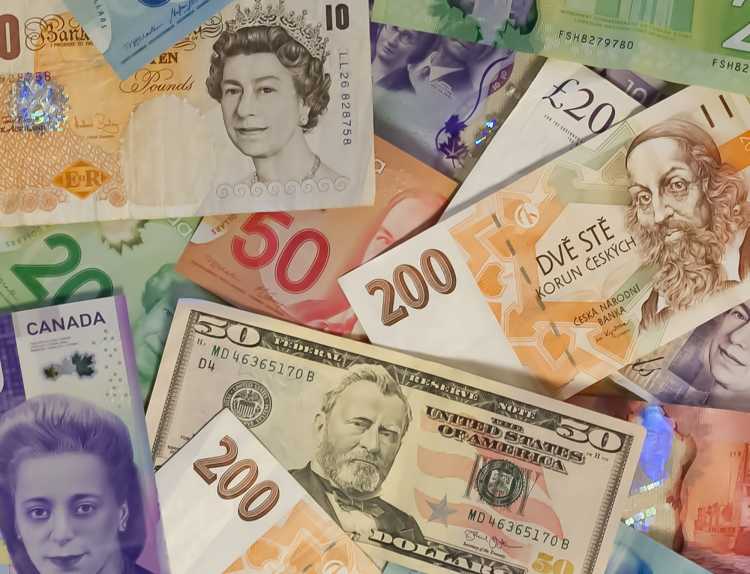Sending an international wire transfer to clients is straightforward. This blog post goes over several popular options that your business can use and tips to help ease the process.
What is an international wire transfer?
An international wire transfer (also referred to as a bank transfer or credit transfer) is a method of electronic funds transfer from one person or entity to another in a different country. You can make wire transfers between two bank accounts or via a transfer of cash through a cash office (stores, banks and educational institutions operate cash offices).
Suggested reading: A guide to cross-border payments
Unlike domestic wire transfers between local banks, international wire transfers are enacted from one country to another, involving unique challenges like exchange rates. Sometimes, international wires have to transfer between multiple intermediary banks before reaching their destination country or receiving bank.
Are international wires secure?
Wire transfers are an extremely safe way to send money, especially compared to traditional mail methods. With that being said, there are risks to international wires. For example, a good deal of information must be correctly transcribed for the transfer to go to the correct account. One wrong number and the whole transfer can be compromised.
Another risk to consider is cybersecurity. Since many international wires have to bounce from one bank to another, there are more chances that your payment will be threatened by a hack or information leak. While these threats often don’t penetrate a bank’s security, it’s worth considering.
What do you need to send an international wire transfer?
One way international wire transfers are kept safe is by leveraging specific information provided by the sender. Before sending an international wire transfer, you’ll need to have the following information available:
-
The full name of the recipient and their address
-
The account type of the recipient’s bank account as well as the account number and routing number
-
The bank’s name and address
-
The full amount of money that you would like to transfer
-
Sometimes, a Bank Identifier Code (BIC code), SWIFT code, or International Bank Account Number (IBAN) will be needed as well.
This information will help protect against fraud by ensuring that money only goes to the intended recipient.
About SWIFT and how it affects international wire transfers
SWIFT is a special payment network that runs through a cooperative called the Society of Worldwide Interbank Financial Telecommunications. Many banks use SWIFT connections to transfer payment instructions and transfer details, sending them to the appropriate receiving bank to help facilitate smooth and accessible international payments. This means that banks don’t have to handle all parts of the transfer themselves, saving them time and helping your payments stay secure.
Suggested reading: How SWIFT payment works
How to send an international wire transfer
We’ll break down how to send an international wire transfer into two parts. First, we’ll go over the different methods you can use to make the transfer, and second, we’ll offer tips to help make the process a little smoother.
1. Methods to carry out your international wire transfer: your bank or a payment service
Your first step is to understand which services are available to carry out the payment on your behalf. Fees, ease of use and transfer limits may affect which you choose.
Here are a few popular options:
Online bank transfers. Made through your bank’s user interface, this is one of the most straightforward methods. It’s a practical and convenient method of transfer for both you and the client. Less paperwork is involved, and you don’t have to travel to your bank.
Make an international wire transfer at a bank branch. With the help of a teller, this is a user-friendly way to ensure all aspects of your transfer are solid. Before making your way over, ensure to have your debit card or credit card with you to speed things along and have all information needed from your recipient to initiate your transfer.
Make an international wire transfer over the phone. Similar to making a transfer at a bank branch but without the commute, you can always go through your bank’s automated services or via a teller who can guide you through the process. Ensure that you have all information ready before you make the call to ensure the process goes smoothly.
Use a payment service. There are plenty of payment services that can streamline an international wire transfer for you. Find your preference between you and the recipient and follow the service’s instructions to make your transfer.
Several well-known options include:
-
PayPal. Paypal has become a staple in wire transfers as it was one of the first programs to offer secure transfers for individual users. Users create a Paypal account and proceed from there with a simple interface that is user friendly.
-
Western Union. Western Union has been around for over 170 years making them one of the oldest financial services in the world. They advises users of possible exchange rates when dealing with foreign currency.
-
TransferWise. This company offers wire transfer services, advertising lower fees and markups than some of the more expensive offerings. TransferWise also gives users up-to-date information regarding global currencies.
Whether it’s a bank or a payment service, many of these options should have a dedicated page for their users to help begin a transaction. In most cases, when using a bank’s website, use the search bar or account services tab. If using a payment service, follow the listed instructions on their knowledge base or interface. You can also contact customer support if you have issues finding the correct page.
2. How to make your international wire transfer easier
Now that you’re aware of method to use, below are a few tips to keep you organized when carrying out the transfer.
Confirm your online transfer limit. Transferring a large amount of money is sometimes only possible via your bank or a certified banking institution. Be sure to note the limit for transfer as there are sometimes hefty fees involved with more considerable sums. If using a bank, consider that a limit may be placed on what you can transfer based on your available credit or funds.
Get your bank details in order. Have your banking information on hand when starting any transfer process. Before you plan to initiate a transfer, check for any fees associated with your bank’s money transfer services. Get all needed information from your recipient and double-check it before you give it to your bank or other transfer providers.
Determine the processing fee. Research any possible fees or exchange rates prior to starting an international wire transfer. Simple awareness of a fixed fee or markups can go a long way in avoiding annoying and unanticipated expenses.
Understand exchange rates and hidden fees. Educate yourself on the country’s current economic state before initiating any transfer and check any applicable fees that may apply. Our world is a massive market that’s constantly changing, so keeping informed of exchange rates and transfer fees isn’t just sound practice but also an act of prudence. Even losing a small sum can add up if an exchange rate or sudden loss in value reduces the funds you intended to send or receive.
Find out how long it will take to arrive. International wire transfers can take anywhere from a single business day to several days, depending on a few factors. If a larger number of intermediary banks are involved, be ready for a longer delay between the initiation of a transfer and when the funds will arrive to the recipient. Keep a record of the transfer for added security, and check your transfer service or bank’s policies regarding its services to stay on top of any complications that might arise.
International wire transfers vs. global ACH
Are you considering whether you should send money via a wire transfer or global ACH? There are a handful of differences between the two, ranging from the cost to the amount of time the transfer takes.
Here are a few of the main differences between these two types of international transfers:
Payment speed
-
International wire transfers often take only two business days to arrive at their destination. But the time can be affected depending on the banks involved, the countries and the currencies.
-
ACH often takes a few days longer since a clearing network is used and the two banks aren’t directly sending money to each other.
International wire transfer fees
-
International wire transfer fees can increase quickly. Sending money can easily cost up to $50, and there is often a fee for receiving it as well. These fees don’t account for currency exchange fees.
-
ACH is a much cheaper option, often being less than $10.
Global money transfer regulations and limitations
Regulations and limitations may come into play for both international wires and ACH transfers.
-
International wire providers, for example, often have minimum and maximum size limits on your transfers, and how often you can send them. It may be impossible to do high volumes of international wires through your provider because of this.
-
ACH isn’t free from these regulations either. Different services will set limits on the frequency of transfers you can send through ACH.
Beyond international wire transfers
Understanding how to pay your clients or contractors overseas is a must as your business expands. Here are a few blog posts to help you get started:

